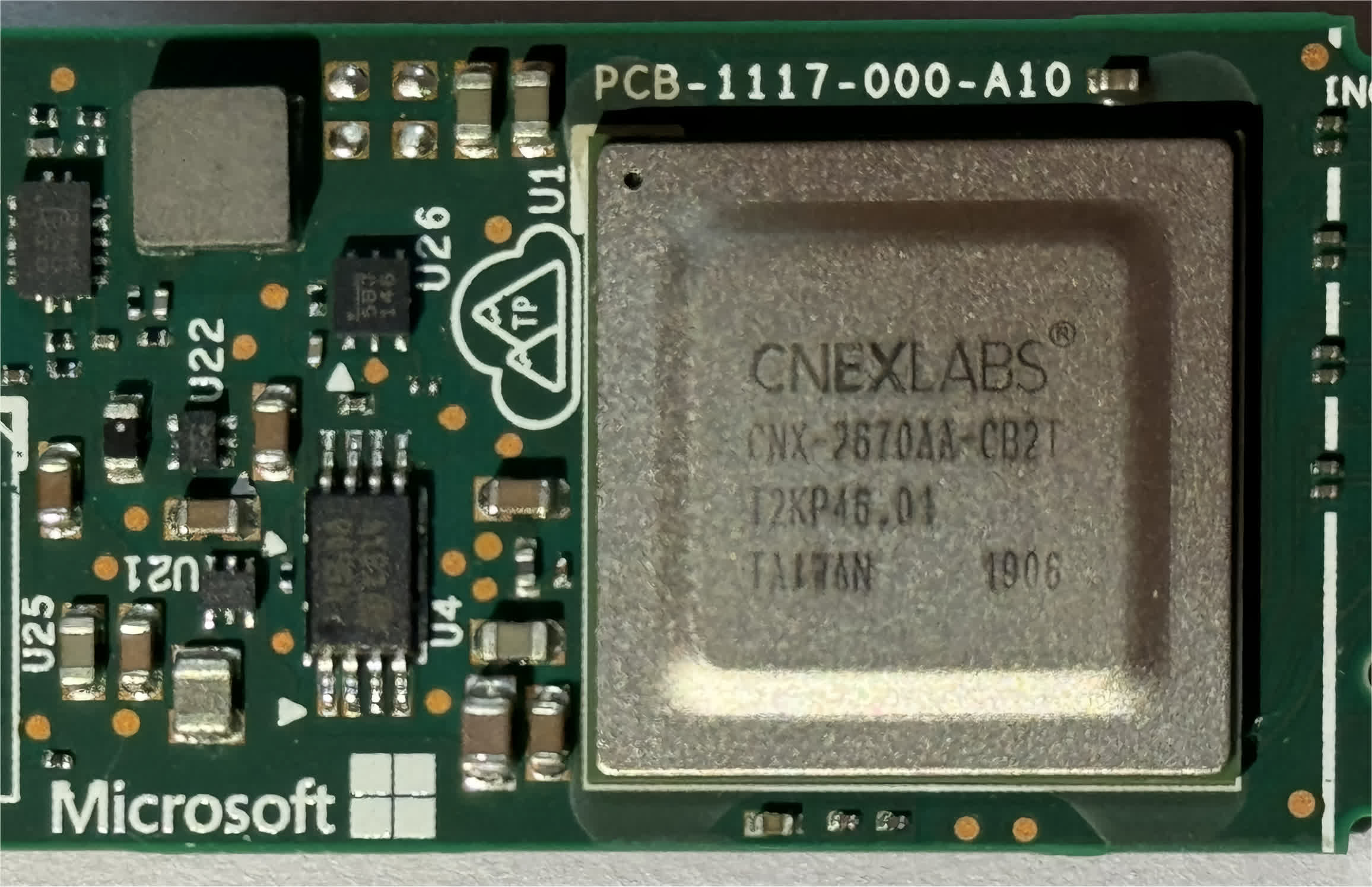In a nutshell: A mysterious Microsoft storage drive has surfaced on X that could be used in data centers and servers. The Z1000 SSD in question utilizes a CNEX Labs controller mated to four 256 GB Toshiba Bit-Cost Scalable Generation 4 96-layer 3D eTLC NAND flash modules for a total capacity of 960 GB. There is also a gigabyte of Micron-made DDR4 used as cache.

Assuming the drive utilizes PCIe 4.0, it could be decently fast. Then again, if it is meant for data centers and servers, pure speed probably is not a top priority.
Interestingly enough, a label affixed to the drive identifies it as an engineering same with a date of 5/18/2020 attached. If that is indeed the drive's manufacturing date, it means the sample is nearly four years old at this point. This likely rules out the possibility of it being a PCIe 5.0 drive as such tech was in its very early states in mid-2020.
SSDï¼Â Microsoft Z1000 960GB M.2 22110 NVMe 1.2
– �"åÂÂå®Â�--YuuKi_AnS (@yuuki_ans) March 9, 2024
主æ§(Control)ï¼Â CNEXLabs CNX-2670AA-CB2T(19y6w)
�"åÂ(Cache)ï¼Â Micronï¼ÂD9VPPï¼Â DDR4 1GB MT40A1G8SA-075:E
�-�'(NAND)ï¼Â Toshiba 3D eTLC - 256GB TH58LJT1V24BA8Hï¼Âbics4 96Lï¼Â https://t.co/pJegEYzsph pic.twitter.com/ifgxTDiiJM
Tom's Hardware also pointed out the extra BGA mounting points in some of the leaked photos, where an additional chip could be added. There are also multiple unused solder points on both sides of the SSD, suggesting higher capacity models are indeed possible and likely exist, perhaps in 2 TB or 4 TB variants.
The publication points to several clues suggesting this could be a data center part. For starters, you have the CNEX Labs controller itself. This privately-held company was founded in 2013 and has previously been linked to 3D XPoint and Optane drives. Tom's also notes the drive is a 22100 model, meaning it is 100mm in length. That is a bit longer than drives commonly found in ordinary PCs like 2280s which measure 80mm long.
The main reason why we have not heard much about this drive up to this point is likely due to the simple fact that it is not a retail part. It might reside exclusively in Microsoft servers, hence the reason not to advertise it.
Image credit: